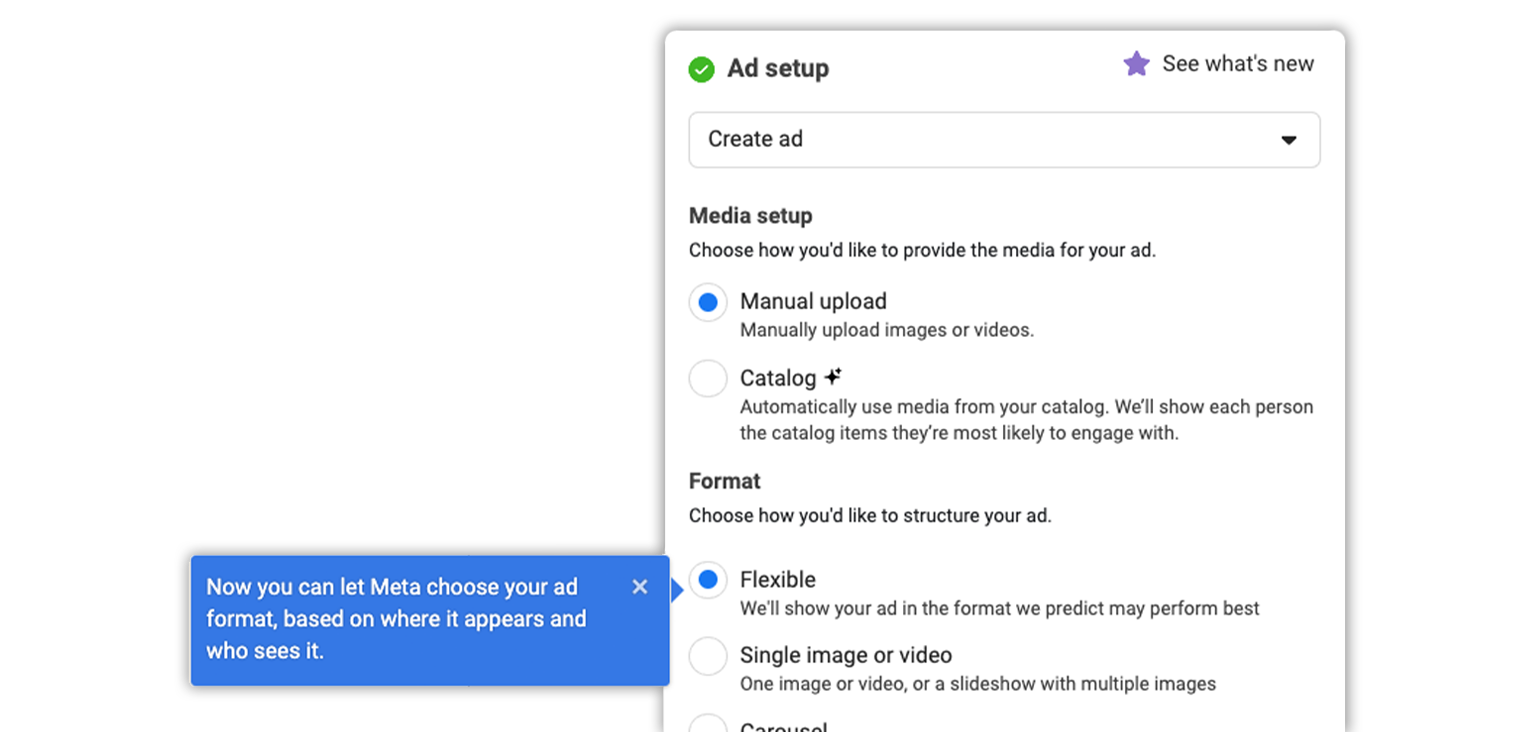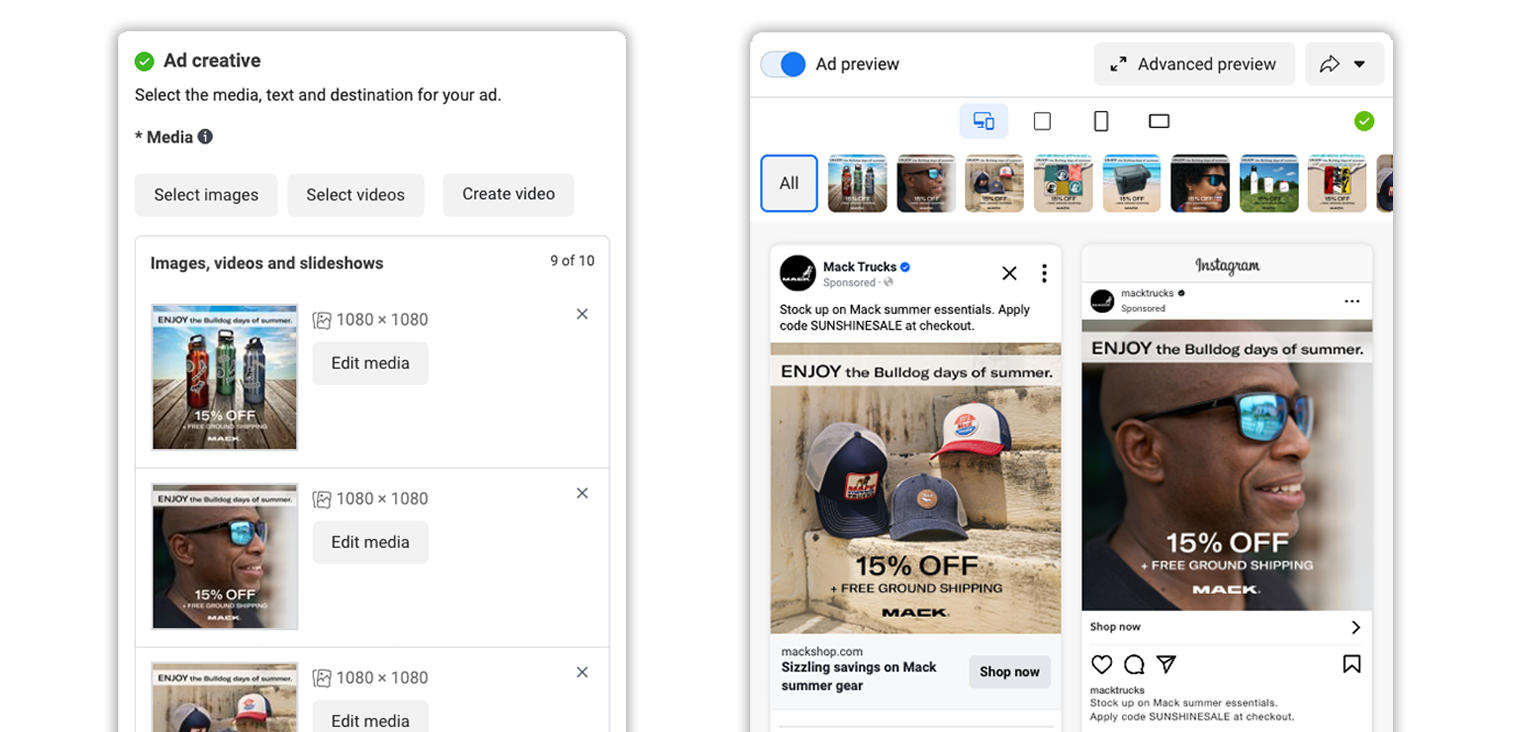More Dynamic Than Ever: Meta’s New Flexible Ads
As a digital agency, we’ve seen the evolution of dynamic creative ads from Google in 2011 to Meta’s adoption in 2015. These ads revolutionized online advertising by allowing a set of variables in imagery and copy to automatically change based on user behavior, offering a substantial improvement over traditional static ads.
Now, Meta has introduced flexible ads, a significant step forward from dynamic creative ads. Flexible ads are designed to connect advertisers with consumers even more effectively by leveraging advanced predictive technology.
What Are Flexible Ads?
Flexible ads allow us to add multiple creatives to a single ad, offering up to 10 images/videos and 5 options for text, headlines, links, and CTA buttons. AI determines the best combination depending on placement and target audience, so viewers might see a single image, video, or carousel, optimized to display the best-performing creative. It’s like having several ads in one.
While flexible ads share many features with dynamic ads, they bring new customization options. Advertisers can now tailor the creative media for placements across Facebook, Messenger, and Instagram, ensuring the best practices and most effective assets are utilized. Additionally, flexible ads can generate carousel variations based on the images provided, which was not possible with dynamic ads. This format not only focuses on the content but also on how it is presented.

Benefits of Using the Flexible Ad Format
From our experience, flexible ads simplify testing and optimization, allowing our team to focus more on creating excellent content. The ad format is automatically optimized, showing viewers what the AI predicts to be the best format. This means we no longer need to create multiple ads per ad set to test different formats. AI determines the most engaging ad formats for various placements, and we can customize ads by grouping certain media with different combinations of texts to keep them fresh and interesting.
By leveraging predictive technology, flexible ads enable the creation of highly tailored ad experiences with multiple creative variations, ensuring the most effective combinations reach the right audiences across various platforms.

When to Use Meta’s Flexible Ad Format (and When Not To)
Choosing a flexible ad format simplifies the ad creation process and enhances campaign performance through automated testing and optimization. This approach can significantly impact campaigns, especially when the most effective creative direction is uncertain.
However, it’s important to recognize when flexible ads may not be the best choice. For campaigns with very specific creative requirements or where precise control over each element of the ad is necessary, creating separate ads might be more effective. Additionally, if your campaign is small-scale with a highly targeted audience, the benefits of dynamic optimization may not outweigh the simplicity and direct control offered by traditional ad formats.
Incorporating flexible ads into your marketing strategy can lead to better engagement, higher conversion rates, and improved ROI, especially for larger, more dynamic campaigns where many viable message permutations are possible. Whether you’re facing resource constraints, targeting diverse audience segments, or aiming for broad campaign objectives, flexible ads offer a versatile and efficient solution. As the digital landscape continues to evolve, embracing flexible ads will help you stay ahead of the curve, delivering impactful and relevant ad experiences to your audience. Just remember to consider your specific campaign needs in choosing the most appropriate ad format for achieving your goals.







